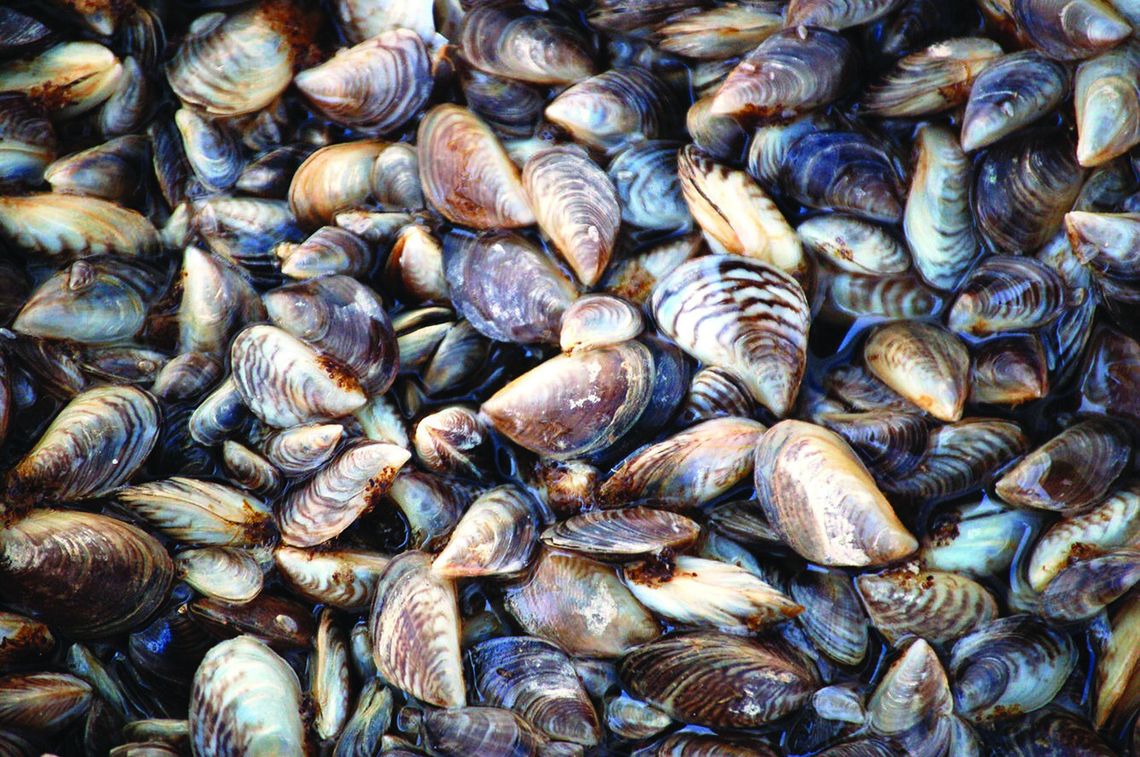Washington is upping efforts to keep an invasive freshwater mussel from gaining a shell-hold in the state’s rivers and lakes, using tactics ranging from DNA testing to shellfish- sniffing dogs.
Quagga mussels can cause major problems as layers of them crust over components of hydroelectric dams and locks, or clog drinking water or irrigation systems. Fisheries and fish ladders that allow salmon to bypass dams could be disrupted, too. The mussels can also outcompete native species, throw off water quality, and otherwise degrade ecosystems.
They were found last year in Idaho, stoking new worries about their threat to the region.
Washington’s Invasive Species Council cites estimates that it will cost $100 million annually to keep the state’s power and water infrastructure running if quagga mussels or non-native zebra mussels were to invade. That amount doesn’t factor in the cost of harm to habitat or fishing.
Even taking the potential problems for dams out of the equation, Justin Bush, aquatic invasive species policy coordinator at the state’s Department of Fish and Wildlife, said the mussels would have “a devastating, catastrophic impact to our environment and our economy.”
The Columbia River Basin for years has been the last major U.S. watershed free of the invasive mussels. But last September, Idaho officials said they’d detected quagga mussels near Twin Falls in the Snake River, which runs into the Columbia.
Starting July 1, new Idaho laws took effect to combat the aquatic invasive species. Changes to the Idaho law include mandatory inspection and decontamination for out of state watercraft, requirements for removing drain plugs and new requirements for local watercraft inspection stations.
The new law requires all out of state watercraft must be inspected and decontaminated at a watercraft inspection station prior to launch, according to a press release from the Idaho State Department of Agriculture. Before launching in Idaho, a nonresident watercraft owner must also purchase an invasive species sticker. In Idaho, a conveyance or watercraft includes but is not limited to a boat, kayak, paddleboard, inflatable watercraft, sailboat, trailer or any other means or method of water transportation.
“Before transporting any watercraft, operators must remove the drain plug and drain all water, including all internal compartments, such as ballasts, bilges, live wells and motors,” the press release said. “All bilge and ballast plugs and other barriers that prevent water drainage from a conveyance must be removed and remain open while a watercraft is transported by land within the state.”
Funding is now available for Idaho counties, cities or other local entities for equipment and supply costs necessary for the operation of watercraft inspection stations, the press release said.
So what’s to be done in Washington? The Department of Fish and Wildlife has some new money to deal with the shellfish. The Legislature approved $1.81 million for the fiscal year that begins July 1 to combat invasive mussels and the Army Corps of Engineers is providing an equal sum, for a total of $3.6 million.
“We’re significantly increasing efforts,” Bush said this week during a meeting of the Invasive Species Council.
Monitoring for quagga mussels The main way the mussels tend to spread is on recreational boats moved between bodies of water. When grown, they’re 1 to 2 inches and easy to spot but larvae, known as veligers, are microscopic.
Fish and Wildlife wants to fully staff watercraft inspection stations, Bush told the council.
The agency is turning to a variety of techniques to detect mussels in the water. These include measuring calcium levels (the bivalves rely on calcium to build their shells), using a grabber device to pull up and check material from lakebeds, and looking for traces of mussel DNA.
Bush said the department will also add a monitoring crew to three two-person crews it has had.
Idaho Capital Sun editor- in-chief Christina Lords contributed to this report.
.png)














